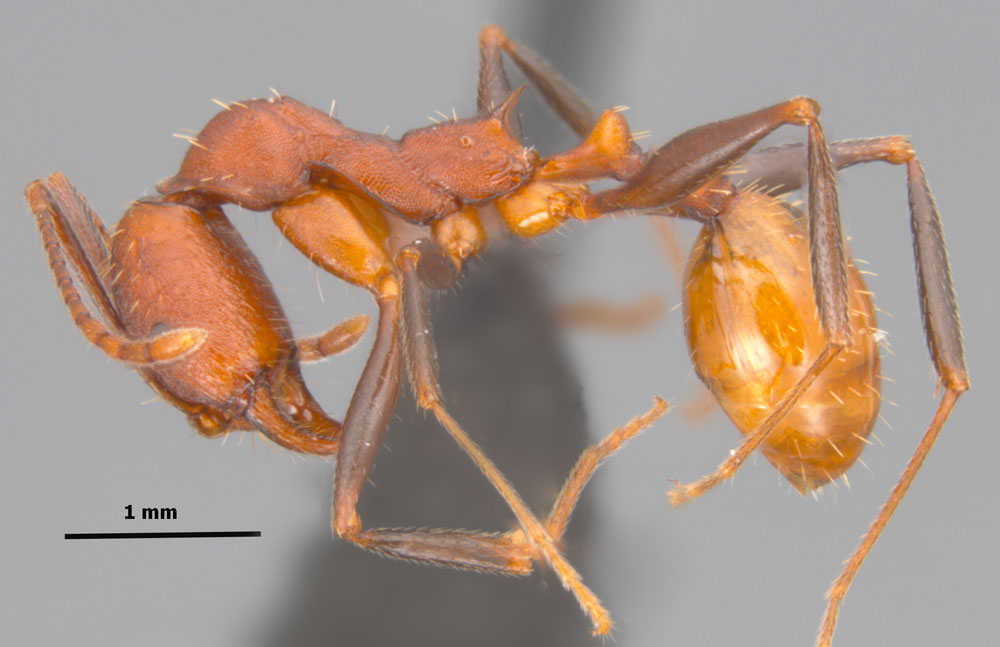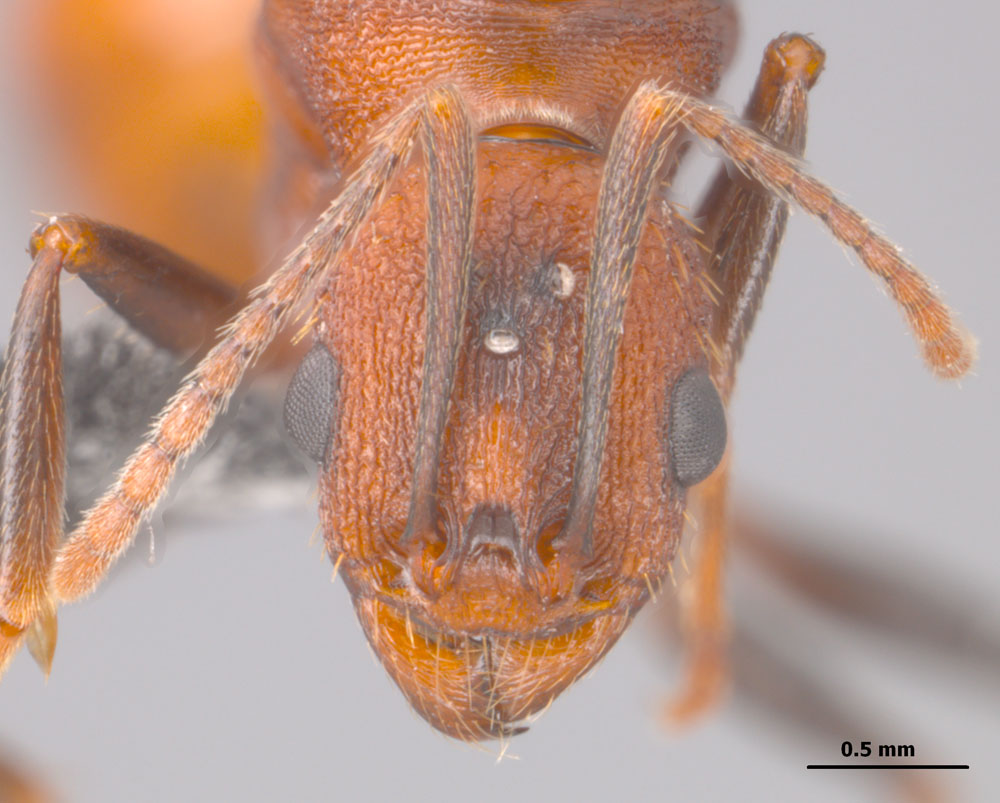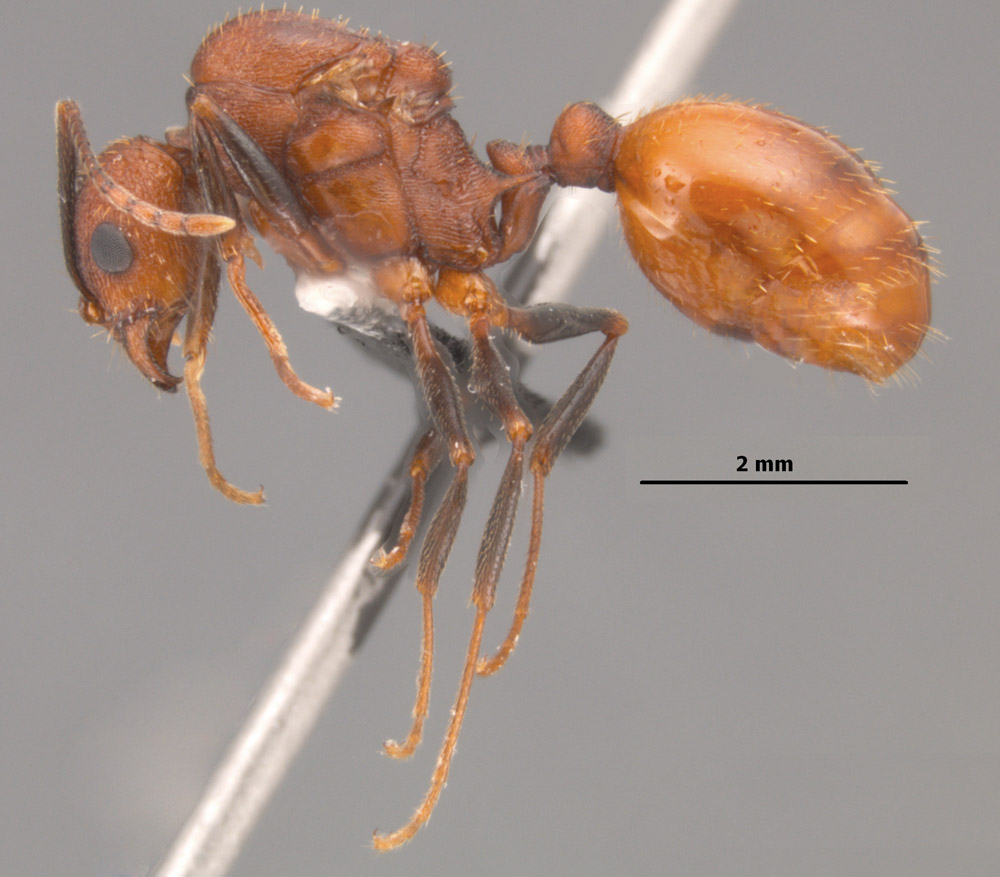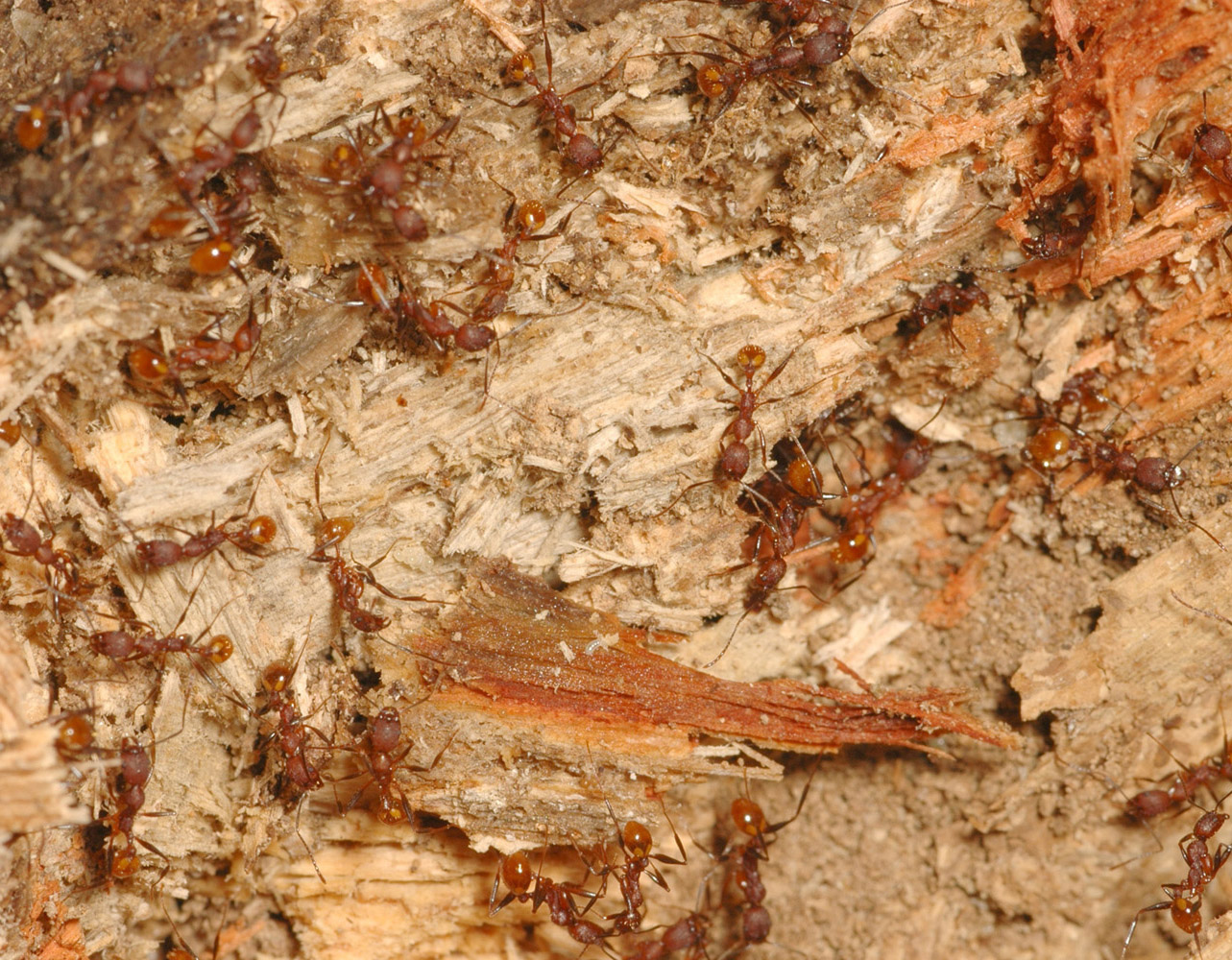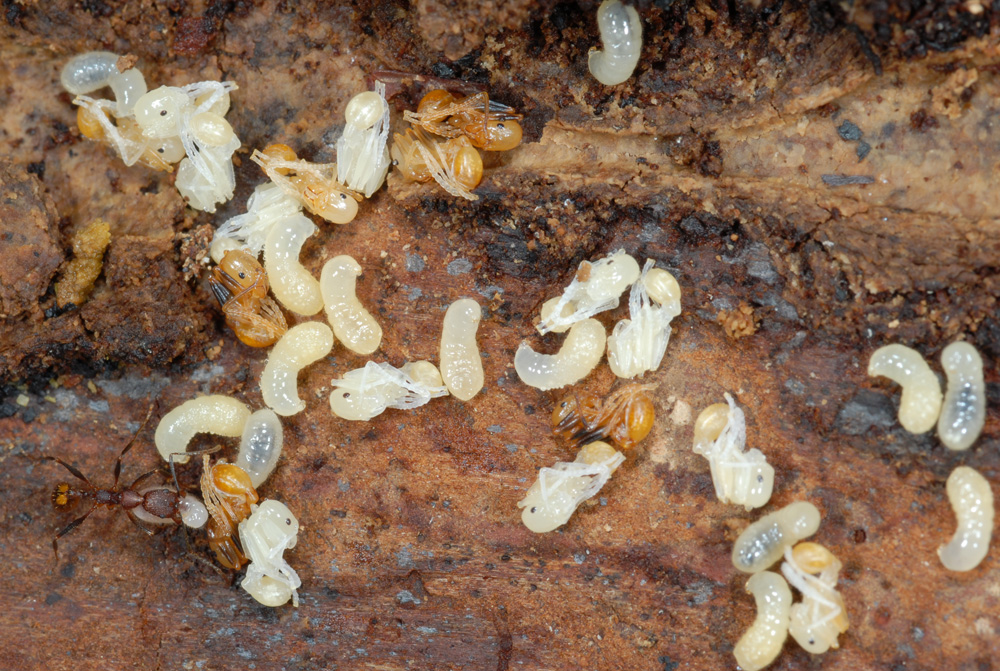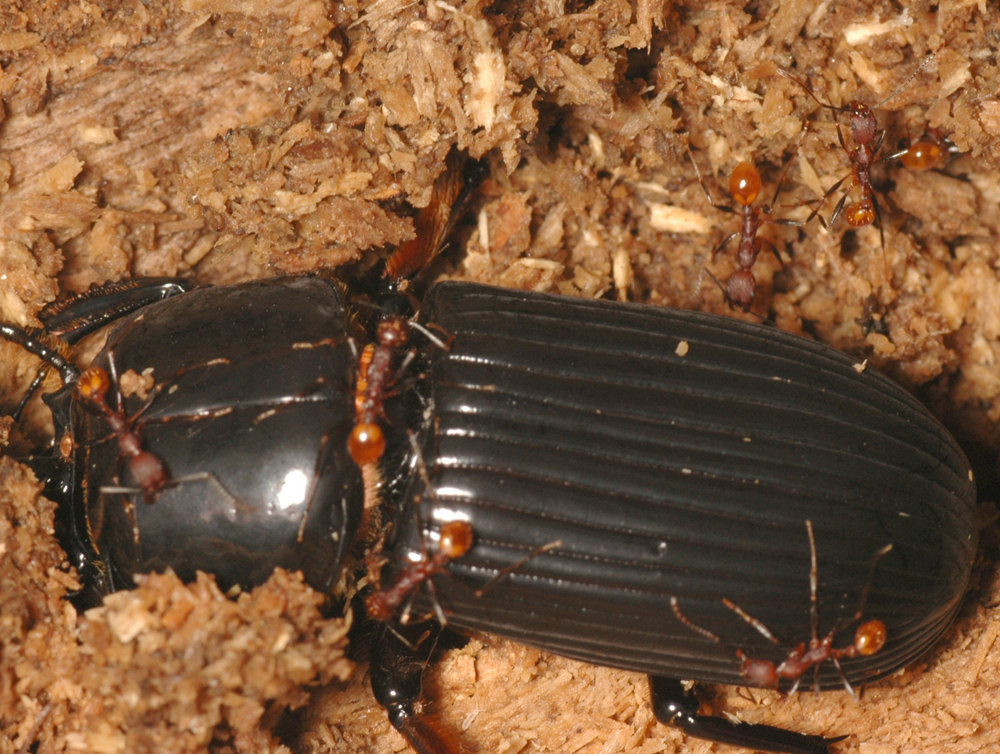Subfamily MYRMICINAE Author: Joe A. MacGown |
|
Aphaenogaster lamellidens, full face view of worker (click image to enlarge). |
Aphaenogaster lamellidens, profile view of worker. The contrasting dark brown femora and tibae are often seen on specimens from this part of the country (click image to enlarge). |
Aphaenogaster lamellidens, full face view of worker (click image to enlarge). |
Aphaenogaster lamellidens, profile view of worker (click image to enlarge). |
Aphaenogaster lamellidens, full face view of queen (click image to enlarge). |
Aphaenogaster lamellidens, profile view of queen (click image to enlarge). |
Aphaenogaster lamellidens colony (click image to enlarge). |
Aphaenogaster lamellidens pupae and larvae (click image to enlarge). |
Aphaenogaster lamellidens workers attacking Bess beetle (Odontotaenius disjunctus: Passalidae) (click image to enlarge). |
|
Introduction Identification Biology and Economic Importance Natural History: Colonies are often large, sometimes with thousands of workers present. Similar to A. fulva, this species is considered to be a generalized predator. Smith (1979) notes that it feeds on dead and live insects. We have collected alates in late June in Mississippi. Distribution Literature Cited Smith, D. R. 1979. In Catalog of Hymenoptera in America north of Mexico. Smithsonian Institution Press, Washington D. C. Vol. 2, pp. 1323-1427. Van Pelt, A. F. 1958. The ecology of the ants of Welaka Reserve Florida (Hymenoptera: Formicidae)Part II: annotated list. The American Midland Naturalist 59: 1-60. |
|





